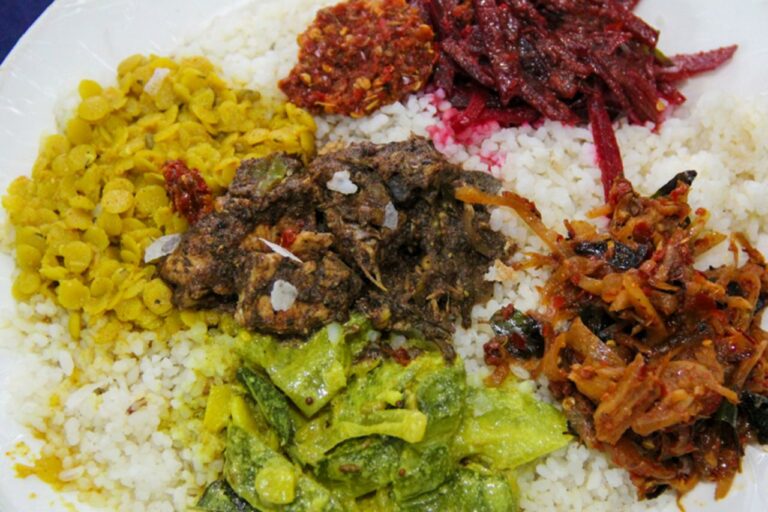Introduction: Coconut in Sri Lankan cuisine
Coconut is an essential ingredient in Sri Lankan cuisine. Known locally as “pol,” it is used in various forms, such as grated, milk, cream, and oil. The nutty flavor and creamy texture of coconut add depth and richness to dishes, making it an indispensable ingredient in many Sri Lankan recipes. From savory curries to sweet desserts, coconut is a versatile ingredient that is widely used in Sri Lankan cuisine.
Coconut milk in savory dishes
Coconut milk is a common ingredient in many Sri Lankan curries. It is made by blending grated coconut with water and then squeezing the mixture to extract the milk. Coconut milk adds a creamy texture and a slightly sweet flavor to curries, which balances out the spiciness of other ingredients. Some popular Sri Lankan dishes that use coconut milk include chicken curry, fish curry, and vegetable curry. Coconut milk can also be used to make rice dishes, such as coconut rice and biryani.
Desserts with coconut
Coconut is also a prominent ingredient in Sri Lankan desserts. Traditional sweets such as coconut pancakes, coconut toffee, and coconut rock are made with grated coconut, sugar, and spices. Watalappam, a Sri Lankan pudding made with coconut milk, jaggery, and spices like cardamom and cinnamon, is a staple dessert in many Sri Lankan households. Coconut is also used in cakes and biscuits, such as coconut macaroons, which are popular in Sri Lanka.
Spices combined with coconut
Coconut plays a vital role in Sri Lankan cuisine by bringing out the flavors of the spices used in dishes. Sri Lankan cuisine is known for its extensive use of spices, such as cinnamon, cardamom, and cloves. These spices are often combined with coconut to create a unique flavor profile in dishes. For example, coconut sambol, a condiment made with grated coconut, red onion, chili, and lime juice, is often served as a side dish with rice and curry.
Coconut in traditional celebrations
Coconut plays a significant role in traditional Sri Lankan celebrations, such as weddings and religious festivals. Coconut oil is used in many Hindu and Buddhist rituals, and coconut flowers and leaves are used for decoration. The coconut is also broken as part of traditional ceremonies, such as the “Kiri Bath” ceremony, where milk rice is cooked with coconut milk and served with sweet or savory accompaniments.
Health benefits of coconut in Sri Lankan cuisine
Coconut is a nutritious ingredient that is widely used in Sri Lankan cuisine. Coconut milk and oil are good sources of healthy fats, which can help regulate cholesterol levels and improve heart health. Coconut is also high in fiber, vitamins, and minerals, such as iron, potassium, and magnesium. Additionally, coconut is known for its antibacterial and antiviral properties, which can help boost the immune system and promote overall health.

